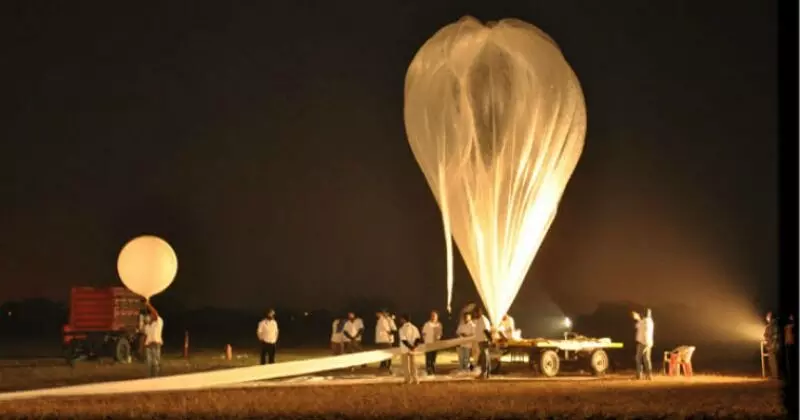ISRO to launch 10 balloon flights to conduct experiments at high altitudes
The balloons filled with hydrogen gas carrying scientific instruments will be launched from the Balloon Facility at TIFR, Hyderabad. The balloons are made of thin (polyethylene) plastic films, ranging in diameters from 50 meters to 85 meters and will be launched between 6 a.m and 8 p.m.
By Newsmeter Network
Hyderabad: Ten balloon flights will be conducted from Hyderabad for scientific purposes from 1 November 2022 to 30 April 2023 under the aegis of the department of atomic energy and ISRO, informed B. Suneel Kumar, scientist–in–charge at Tata Institute of Fundamental Research (TIFR), Hyderabad. The first balloon flight is planned around the second week of November 2022.
The balloons filled with hydrogen gas carrying scientific instruments will be launched from the Balloon Facility at TIFR, Hyderabad. The balloons are made of thin (polyethylene) plastic films, ranging in diameters from 50 meters to 85 meters and will be launched between 6 a.m and 8 p.m.
The balloons, which will carry scientific instruments for research at high altitudes, are expected to reach heights between 30 km and 42 km depending upon the experiments being undertaken. The instruments will be kept at these heights for periods ranging from a few to 10 hours and then they will be released from the balloon.
After they are released, the instruments will come down to the ground on large coloured parachutes. During the ascent and at ceiling, the balloons will drift in the prevailing winds and the instruments may, therefore, land at points as distant as about 200 to 350 km from Hyderabad. The balloon drifts will be on the Visakhapatnam-Hyderabad-Sholapur line, in the areas of Andhra Pradesh, north Karnataka, and Maharashtra.
Mr. Suneel appealed to the people that the persons who find the parachute and instruments are requested not to remove them from its place of landing and to telephone or send a telegram to the address which will be given on various packages. They are also requested to contact the nearest police station, post office, and district authorities about the finding. Instruments are kept inside wooden cages or large aluminum framework/containers for safety.
Regarding the instruments, Mr. Suneel said they are extremely sensitive and valuable scientific data will be lost if they are tampered with. "There may be high voltages on some of the instruments which will be dangerous but only if the instruments are opened. Otherwise, they are safe and harmless," he added.